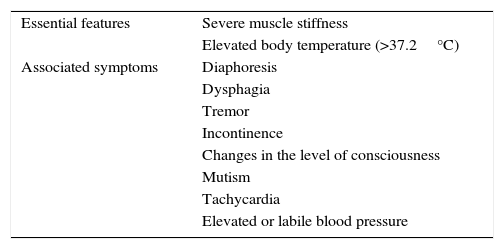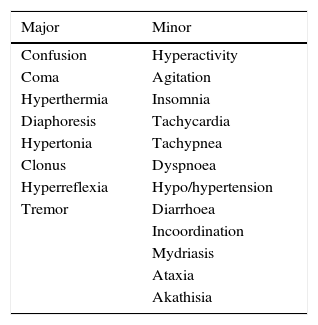Malignant hyperthermia is a hypermetabolic syndrome that appears in susceptible patients after exposure to certain anaesthetic drugs (succinylcholine, inhalation anaesthetics). Its incidence in Spain is 1 in 40,000 adults, with a 10% mortality rate. It is induced by an abnormal regulation of the ryanodine receptors, producing a massive release of calcium from the sarcoplasmic reticulum in the striate muscle. Clinical manifestations include: CO2 increase, tachycardia, haemodynamic instability, metabolic and respiratory acidosis, profuse sweating, hyperpyrexia, CPK increase, myoglobinuria, kidney failure, disseminated intravascular coagulation (DIC), and ending in cardiac arrest. Dantrolene sodium is a ryanodine receptor antagonist, and inhibits the release of intracellular calcium. Definitive diagnosis is achieved by the exposure of muscle fibres to caffeine and halothane.
Protocols can help guarantee a reliable and secure management when this severe event occurs.
La hipertermia maligna es un síndrome hipermetabólico que ocurre en pacientes susceptibles, tras la exposición a un fármaco anestésico desencadenante (succinilcolina, anestésicos inhalatorios). En España, se presenta en uno de cada 40.000 en adultos, con una mortalidad estimada del 10%. Está inducido por una regulación anormal de los receptores de rianodina, que produce una liberación masiva del calcio del retículo sarcoplasmático del músculo. Las manifestaciones clínicas son variadas y consisten en: elevación del CO2, taquicardia e inestabilidad hemodinámica, acidosis metabólica y respiratoria, sudoración profusa, hiperpirexia, elevación de CPK, mioglobinuria, fallo renal, CID y finalmente parada cardiorrespiratoria. El tratamiento con dantroleno sódico inhibe la liberación de calcio al antagonizar los receptores de rianodina. El diagnóstico definitivo se realiza con el test de contracción de fibra muscular expuesta a cafeína y halotano.
Ante este grave evento la protocolización del manejo ayuda a garantizar que el paciente reciba una atención fiable y segura.














